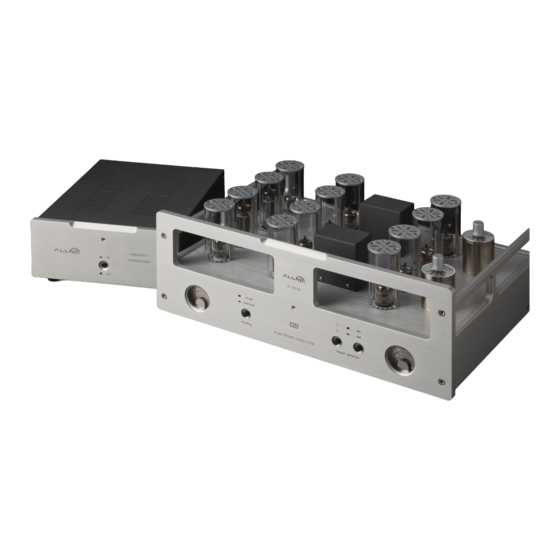ALLNIC AUDIO H-6500 Benutzerhandbuch - Seite 4
Blättern Sie online oder laden Sie pdf Benutzerhandbuch für Verstärken ALLNIC AUDIO H-6500 herunter. ALLNIC AUDIO H-6500 16 Seiten. Phono-stage preamplifier

INTRODUCING THE H-6500 PHONO-STAGE
The H-6500 is Allnic Audio's mid-line phono-stage model, above the H-5500 and below
the H-7000 and the top-of-the-line H-8000 DHT. Like all Allnic Audio products, it uses
Permalloy (iron and nickel alloy) for its transformer cores. Allnic is grateful to Mr. G.W.
Elmen of Western Electric for inventing Permalloy for transformer core use, and in so
doing, providing an enormous service to recorded music listeners everywhere.
The H-6500 has the following features:
• LCR TYPE RIAA EQUALIZATION:
RIAA equalization is a specification for the correct playback of vinyl records, established
by the Recording Industry Association of America. The purpose of the equalization is to
permit longer playback times and improve sound quality.
RIAA equalization is a form of establishing a flat frequency response for the playback of
recorded music. The necessity for this equalization process arises from mechanical
difficulties inherent in record production. To prevent the cutting needle from over-
cutting into the next record groove in the bass, as a record is cut, some bass frequencies
are attenuated. In the treble region, for high frequency sounds not to be masked by the
noise inherent in moving a stylus over and through a modulated vinyl surface, some
treble frequencies are boosted. With the application of the correct filtering techniques
on playback, the result is a flat frequency response with better signal to noise ratios.
There are four de-emphasis methods that can be applied at playback:
Active filters (Negative feedback types):
A.
Different quantities of negative feedback are applied, with deeper feedback to the
high frequencies and shallower to the low frequencies. The benefits of this method
are improved signal to noise ratios, low-cost and consistent operation. Some of the
shortfalls are looser bass reproduction and possibly a pinched and compressed high
frequency playback due to
excess feedback ratios.
Passive filters (CR type):
A.
-
The frequencies are filtered to fit the RIAA specification by varying the amount of
attenuation at different frequencies through a complex capacitor-resistor network.
This technique results in no voltage overload, purer reproduction (because there is
no feedback), and more accurate RIAA compensation. However, there are problems
because the system provides no gain, and insertion loss and impedance matching
issues arise.
4
